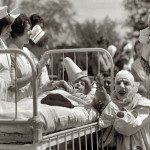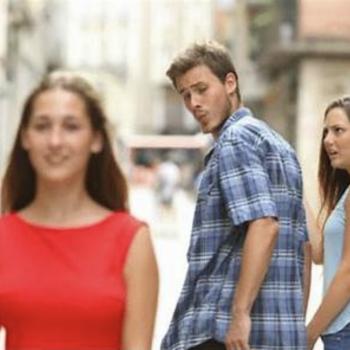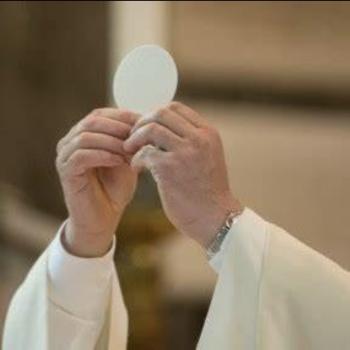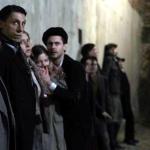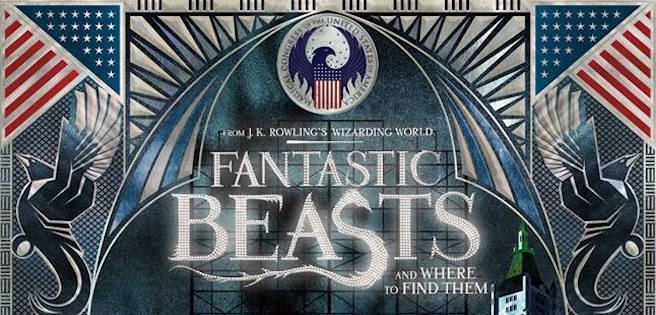
(Spoilers ahead, so don’t whine.)
Full disclosure: I’m a huge fan of the Harry Potter books, but I didn’t really like any of the movies. I thought Daniel Radcliffe’s acting got worse as the series went along. Every time I hear that someone saw the movies but has not read the books, I cringe.
So, it’s with a deep skepticism that I went to see Fantastic Beasts and Where to Find Them. But, I’m glad to say that I absolutely loved it because it gave us something entirely new in the Harry Potter world and yet retained many of Rowling’s deeper themes.
A brief summary is in order. The movie is set in 1920’s America and the vibe really comes through in this movie. As a huge fan of that era, I loved the music, the speakeasys and the general “classy-gritty” vibe of that time in our nation’s history. Our wizard hero, Newt Scamander, for those who are not Harry Potter fans, is the guy who wrote the book, “Fantastic Beasts and Where to Find Them“, a textbook at Hogwarts, but in real life, a stand-alone book that J.K. Rowling wrote for a children’s charity. Newt has a case full of magical creatures that gets opened by accident and mayhem ensues on the streets of New York.
There are so many deep themes in this movie that it would take three or four posts to discuss them all. Subplots included racism, oppression, using children for selfish ends and what fear does when we let it corrupt our souls. But, as there will most likely be many posts on these topics in the coming days, allow me to focus on the one I loved the most: the search for wonder and beauty in the midst of darkness, fear, boredom and death.
This search is embodied by my favorite character of the entire movie, Jacob Kowalski, our “No-Maj” hero. No-Maj is what the American magical community calls someone with no magical ability, or Muggles, as they say in the U.K.
When we first meet Jacob, he’s in a bank trying to get a loan so that he can achieve his dream of opening a bakery. He’s been through the hell of World War I and his reward is another hell, working in a canned food factory. Kowalski is trying to revolt against the nastiness in front of him by creating things of beauty and wonder. The bank denies him the loan, but he meets our magical hero, Newt.
That friendship leads him into a larger world – a world that he suspected might exist but could never quite articulate. Every revelation to him is sacramental and it changes him. When he meets Queenie, a beautiful witch, there is an instant connection. They start to change each other’s world and the magic of love goes straight into their hearts. Yeah, that’s sappy and I don’t care. I cried at the beauty of their relationship.
Kowalski’s journey of transformation is complete when he steps inside Newt’s suitcase, which is basically one huge zoo. He wanders around as Scamander introduces him to wonderful creature after wonderful creature. The wizard is not just teaching him that magic exists, but is showing him the full-orbed beauty of the world around him and how gentleness breeds love of created things.
To be honest, the biggest reason I loved Kowalski’s character is that it represents how I felt coming into the Catholic Church. Yeah, I know, there are many dark things in the church, just like in the magical world of Harry Potter. I’m not immune to the destructive power of what happens when Catholics doesn’t embrace the magic of the faith and instead embrace a cold and rigid formalism that leads to even darker evils. Indeed, Sick Pilgrim is founded on exploring much of that broken tragedy.
But, just like in Newt’s suitcase, there is also beauty upon beauty, truth upon truth, goodness upon goodness. And, I think sometimes, we forget to see the goodness because the darkness clouds our vision. When we see the horridness that happens in the church, we forget the light and the magical beauty around us. Just like the American magical community, instead of seeing the beauty of Newt’s creatures and how it can change us, we only see things that harm. And when we focus on the darkness too much, it can make us become what we oppose and despise.
Like Kowalski, I have many scars, some deeper and darker than many know. Many of these scars were even caused by my fellow Christians. But, I also know that I’ve inflicted my share of terrible wounds. I need healing as much as anyone. But, I believe that we can find beauty, and I believe the Catholic Church can lead us to that beauty when it’s focused on truth, goodness, mercy, love, joy, peace, patience and self-control. It can only do that when it’s not being the American magical community and focuses on being Newt Scamander’s briefcase.
But even more, we can make our own personal bakeries to create our own beauty in the world. I wish I could talk about the end of the movie, because it really sums up this review. My only advice is, see the movie, pay attention to the end and then come back to read this again.

